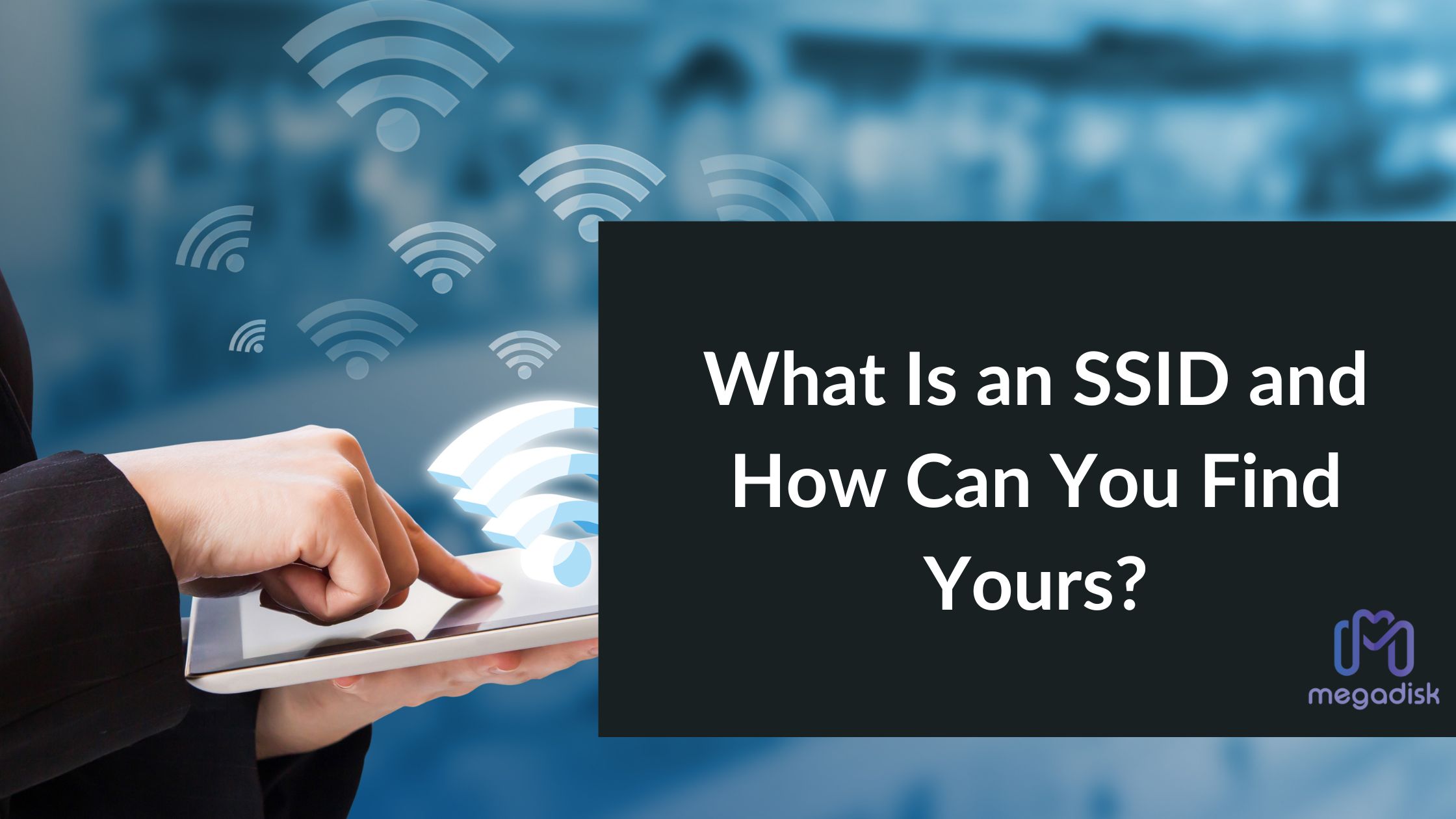An SSID, or Service Set Identifier, is like a nameplate that identifies your network. It’s what allows you to connect your devices and navigate the digital world.
But how can you find yours?
Don’t worry, it’s simpler than you might think. In this guide, we’ll talk about what is an SSID and show you how to discover your SSID on Windows, Mac, and mobile devices.
What Is an SSID
If you’re wondering what an SSID is, it’s simply the name of your wireless network. SSID stands for Service Set Identifier and is used to identify and connect to your network among others in the range. It’s like the name tag for your internet connection. Having a unique SSID allows you to personalize your network and make it easily recognizable for your devices and guests.
The SSID is what you see when you search for available Wi-Fi networks on your phone or computer. It’s the name that appears in the list, inviting you to connect. So, it’s important to choose a name that reflects your personality or the purpose of your network. Whether you go for something straightforward like ‘Home Network’ or get creative with ‘Freedom WiFi,’ the choice is yours.
Having a strong and secure SSID is also important for protecting your network. Avoid using default or common names, as they can make it easier for unauthorized users to access your network. Instead, create a unique and complex SSID that includes a combination of letters, numbers, and symbols.
Why Is the SSID Important
Understanding the importance of the SSID is essential for managing and securing your wireless network. The SSID, or Service Set Identifier, is the name of your Wi-Fi network that you see when you search for available networks to connect to.
Here are four reasons why the SSID is important:
- Privacy and Security: Changing the default SSID provided by your router helps prevent unauthorized users from easily identifying and accessing your network. This protects your personal information and ensures that only trusted devices can connect.
- Network Management: Assigning a unique SSID to your network allows you to easily identify and manage multiple networks in the same area. This is especially useful in crowded environments like apartment buildings or offices with multiple Wi-Fi networks.
- Ease of Connection: Having a memorable and recognizable SSID makes it easier for you and your trusted devices to connect to your network quickly, without confusion or frustration.
- Freedom and Independence: Customizing your SSID gives you the freedom to express your personality or show support for a cause that matters to you. It’s a small but powerful way to assert your individuality in the digital world.
Understanding the importance of the Service Set Identifier empowers you to take control of your wireless network, protect your privacy, and enjoy the freedom to connect on your own terms.

Finding the SSID on Windows Devices
To find the Service Set Identifier on your Windows device, follow these simple steps.
- Start by clicking on the Wi-Fi icon in the bottom right corner of your screen. This will bring up a list of available networks.
- Look for the network you’re currently connected to. The SSID, or Service Set Identifier, is the name of the network. It could be something like ‘MyHomeNetwork’ or ‘OfficeWi-Fi’.
- Once you have identified the network, right-click on it and select ‘Properties’. A new window will appear with detailed information about the network.
- In this window, you’ll see a field labeled ‘Network name (SSID)’. The value displayed in this field is the SSID of the network you’re connected to.
Another way to find the SSID is by accessing the Network and Sharing Center.
- Simply go to the Control Panel, click on ‘Network and Internet’, and then select ‘Network and Sharing Center’.
- From there, click on the name of your network and the SSID will be displayed.
Finding the Service Set Identifier on your Windows device is an easy process that allows you to identify the network you’re connected to and ensure your freedom to access the internet.
Locating the SSID on Mac Devices
Finding the SSID on your Mac device is a quick and easy process. Here’s how you can do it:
- Click on the Wi-Fi icon: Look for the signal bars icon in the top right corner of your screen. Click on it to open the Wi-Fi menu.
- Select ‘Open Network Preferences’: At the bottom of the Wi-Fi menu, you’ll find an option that says ‘Open Network Preferences.’ Click on it to open the Network Preferences window.
- Choose your Wi-Fi network: In the Network Preferences window, you’ll see a list of available networks. Look for the network name (SSID) you want to connect to and click on it.
- View your network details: Once you’ve selected your network, you’ll see the network details, including the network name (Service Set Identifier) and other information like the network security type.
Finding the SSID on Mobile Devices
To find the SSID on your mobile device, start by opening the Wi-Fi settings. This will allow you to see the available Wi-Fi networks in your area. Once you’re in the Wi-Fi settings, you’ll find a list of networks. The SSID is the name given to each network, and it will be displayed there.
Here’s a helpful table to understand how the SSID appears on different mobile devices:
| Device | SSID Displayed as |
|---|---|
| iPhone | MyFreedomNetwork |
| Samsung Galaxy | FreedomZone |
| Google Pixel | Connect2Freedom |
| OnePlus | FreedomFi |
| LG | FreeNet |
Frequently Asked Questions
Can I Change My Service Set Identifier to Something Other Than the Default?
Yes, you have the option to change your SSID to something other than the default. It’s important to select a unique and secure name that aligns with your personal preference. By doing so, you can have complete control over your network and ensure its safety.
What Should I Do if I Can’t Find My SSID on My Windows Device?
If you’re unable to find your Service Set Identifier on your Windows device, here are some steps you can take to troubleshoot the issue. First, try restarting both your router and device. This simple action can often resolve connectivity problems. Next, make sure that your Wi-Fi is turned on and that you are within range of your network. If you’re still unable to locate your SSID, it may be helpful to reach out to your internet service provider for further assistance. They can provide guidance and support to help get your connection back up and running smoothly. Remember, it’s important to stay connected and have a reliable internet connection for all your online activities.
Is It Possible to Hide My SSID to Improve Security?
Yes, it is possible to hide your SSID to improve the security of your Wi-Fi network. When you conceal the name of your network, it becomes more challenging for unauthorized users to detect and gain access to your Wi-Fi. This added layer of protection helps safeguard your personal information and prevents potential security breaches. By hiding your Service Set Identifier, you are taking proactive measures to enhance the security of your Wi-Fi network and ensure the privacy of your online activities.
How Do I Find the SSID on a Router That Is Not Connected to My Device?
To find the Service Set Identifier on a router that is not connected to your device, you can use a wireless network scanner app. This app will display all available networks, including their SSIDs. This is a simple and effective way to locate the Service Set Identifier of a router that is out of range or not connected to your device. By using a wireless network scanner, you can easily identify the Service Set Identifier and connect to the desired network.
Can I Have Multiple SSIDs on My Network and How Does It Affect My Devices?
Yes, it is possible to have multiple SSIDs on your network. This can be useful for segregating devices and controlling access. However, having an excessive number of SSIDs can lead to interference and slow down your devices. It’s important to find a balance and only create the necessary SSIDs to meet your specific needs.


